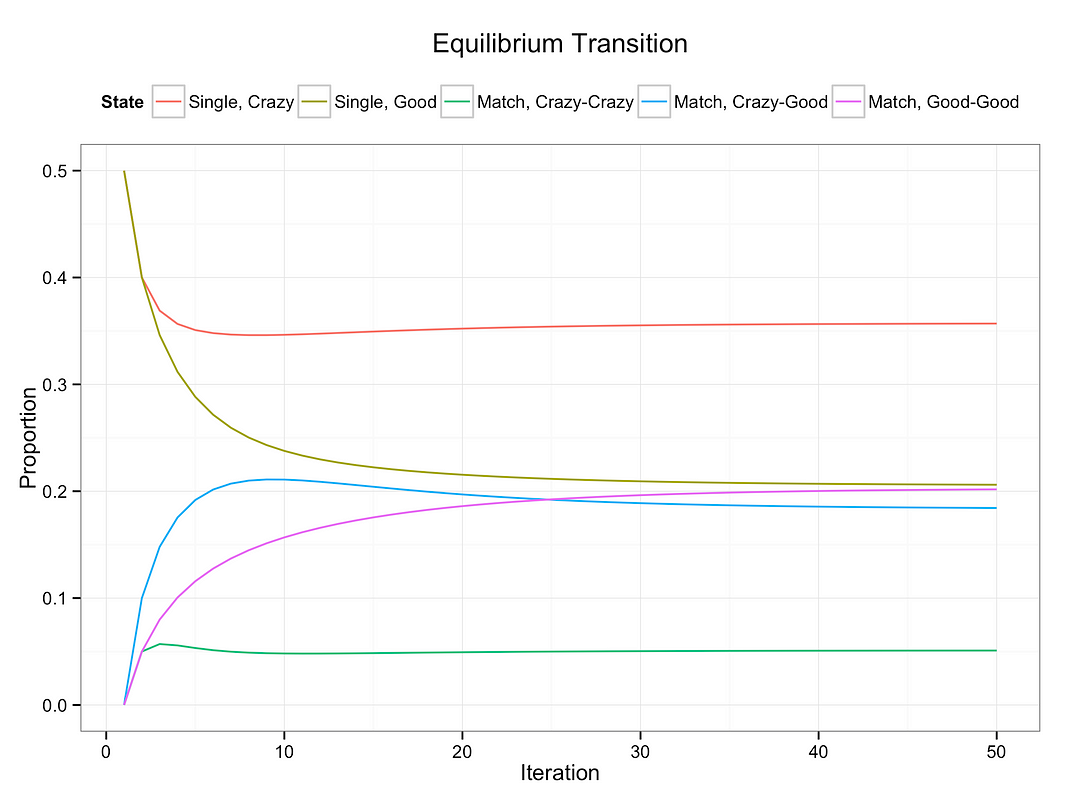Yichuan Wang in Medium:
Suppose that there are two groups of people on the market: “crazy” undateables and “good” people who are hot stuff. The reader, if willing to read such a piece, is of course in the second category.
In each month, all the people mingle and can transition into/from one of five states: crazy-single, good-single, crazy-crazy-couple, crazy-good-couple, and good-good-couple. Single people transition into a couple state if they meet a person and hit it off, and couples spontaneous transition into the single state if they break up.
The key mechanism behind the model is that good couples stay together for longer periods of time. In my baseline calibration, I calibrate the model so that the expected relationship length of a crazy-crazy couple is 2 months, while the respective times for crazy-good and good-good couples are 6 and 24 months respectively.
The transition probabilities change with the number of people in each state. I defer mathematical details to an unwritten appendix, and instead show that under the baseline parameterization there is indeed convergence within 50 months.

We are now ready to answer basic questions about the equilibrium properties of dating markets.
Most Single People are Crazy

Even if only 50% of the population is crazy, in equilibrium around 63% of single people are crazy.
More here.
